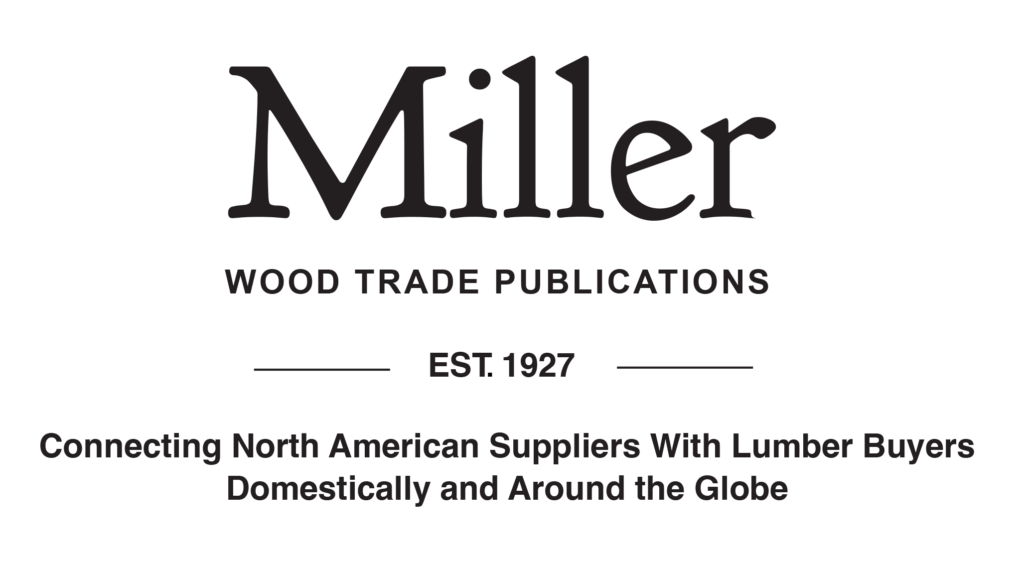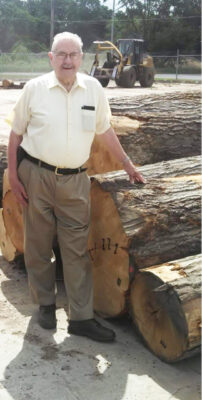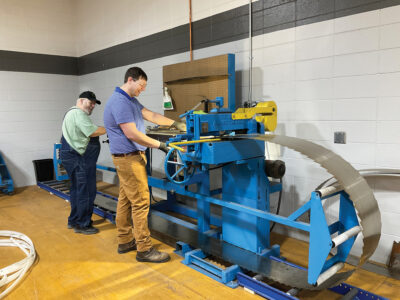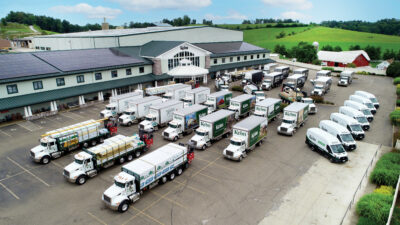
Lumber Market Lows And Construction Concerns In Canada
By Richard Lipman
Guest Writer
There have been many important events in Canada recently, including developments in the Canada-U.S. trade and tariff dispute and the election of a new federal government. These will, of course, have major implications for the softwood lumber industry in Eastern Canada.
To send a message on sovereignty, King Charles III delivered the newly elected government’s Speech from the Throne, the first monarch to do that since 1977, amid continued annexation threats from the U.S. There are now reports that President Trump and Prime Minister Carney are having private discussions to reach a trade deal and lift tariffs. At press time, it was hoped that this could perhaps happen before Canada hosted the G7 Summit in mid-June. Both sides say they will not negotiate in public, so little is known about how close they are to a deal.
According to Natural Resources Canada and the data available at press time, current pricing for 2 x 4 Eastern Spruce-Pine-Fir (SPF) is C$635, which is up slightly from the previous week and from the four-week average. It is also slightly above the 52-week average price.
In Quebec, recent developments speak to the challenges for the lumber business. The Quebec government has been “forced to review their methods. Impediments to forestry activities can create tensions and supply issues,” stated Quebec Forestry Minister Maite Blanchette Vezina. There have been efforts by the provincial government to modernize its forestry legislation to improve the business environment, but they have faced concerns from indigenous communities during the process.
Duties on softwood shipments from Canada are slated to more than double from the current levels. Countervailing and anti-dumping duties are at 14.4 percent as of the data collected at press time and are set to rise to 34 percent, according to the U.S. Department of Commerce.
Groupe Remabec, one of Canada’s largest lumber producers, has just indicated they will lay off most of their workforce temporarily, as the industry faces weakening demand and increasing duties from the U.S. The company blames “persistent imbalances in both access to resources and international markets” for their recent announcement that Arbec Forest Products Inc., their manufacturing division, will indefinitely shut down. This will cause over 1,000 job cuts immediately. The job losses could rise to 1,400 in the coming weeks.
U.S. Customs deposits on softwood lumber exports by Canadian sawmills total $10 billion, Remabec said, indicating the Arbec share of that is “astronomical.” They note this “reduces its competitiveness against both Canadian and U.S. competitors, given the higher price of roundwood in Quebec.” Remabec noted they are hoping for “a return to operations as soon as economic and structural conditions will allow it. The feeling of exasperation is widespread” in the Quebec forestry industry over regulations that have created “an increasingly unstable ecosystem without the predictability or coherence.”
An Ontario producer highlighted that “the need to diversify our markets and find new markets to sell our softwood lumber in, is prevalent in industry conversations. There were also a lot of companies that bought material early and stocked up before the tariffs, so that is impacting today’s market environment.”
A Quebec wholesaler reported, “July 20 to August 2 are the dates for this year’s Quebec Construction Holiday and we are hoping for the traditional buying spree that happens before then. However, purchasers continue to be cautious. People are in a position to be able to buy what they want when they want at the last minute, and this will persist as long as material continues to be easily available.”
On the Pine side, “it has not been a typical spring and the market is not where they should be, but it is not totally dead — retailers are still buying, but the volume isn’t there like it once was,” noted a Quebec manufacturer.
A Quebec wholesaler reported, “In the upper grades, prices have held. The Selects and the No. 1 Commons are selling the best right now, which is kind of unusual for the Selects, as they can be kind of cyclable, but for the last year, they have been going steady. There is no backlog — whatever people have, they can get rid of. The No. 1 Common is moving quite well in 1×4 through 1×8.”
The Quebec government has been forced to review their methods, as impediments to forestry activities can create tension and issues with supply.
According to an Ontario wholesaler, “There is more competition for the No. 1 and No. 2 Common. People are playing games trying to turn inventory into cash, as we typically see in a downturn. But if there is No. 1 or No. 2 Common available, customers are interested. On the industrial side, it is not good. There continues to be less demand and lots of SPF around, so that is a tougher market for the Pine. It is very competitive against the Spruce. I would think the West Coast is going to have to curtail more production.”
An Ontario producer indicated that “logs are not an issue and prices are pretty stable. We see the retailers are currently only buying what they really need. They are not ‘inventorying’ stock. They don’t need to pre-purchase to ensure they are going to have material, as a lot of it is readily available. They are in a better position this year than they were last year. Needless to say, there is a lot of uncertainty out there and so much depends on consumer confidence. There are no COVID-19 checks coming to people anymore. We have very little optimism, because based on what is happening south of the border, you cannot predict even what is going to happen next week. There are always lots of challenges and I think lumber is one of the hardest industries. It is difficult to make a dollar and keep one’s head above water — we just never know what is around the corner.”
Fires are blazing in Western Canada, Saskatchewan and Manitoba primarily, to date. With drought, lack of recent rain and warmer temperatures, the season has started early and smoke is affecting air quality in many of Canadian and U.S. locations. The smoke from out West was even hindering the ability of the Ontario government to gauge how big their fires are, but that has improved. There are several fires in the North and Northwest of the province but, according to the most recent available data at press time, it has been quiet in Central and Eastern Ontario because of regular rain and relatively cool temperatures. According to the most recently collected information at press time, it appears to be quiet in Quebec as well and there have been no half-days of work due to elevated temperatures in the area yet.
The new federal government is recognizing the need for housing and taking it seriously. They have a target of getting the housing completions to 500,000 per year over the next 10 years to restore affordability. The previous high, attained in 1974, was approximately 260,000. To do this, they plan to increase the supply of new houses by cutting the Goods and Services Tax (GST) on new homes, lowering development charges and making favorable changes around tax incentives for purpose-built rental construction. It will still be a stretch to reach those lofty targets.
Productivity could be enhanced through the government’s Build Canada Homes plan, which has a focus on growing Canada’s prefabricated construction industry. They plan to do this by providing nearly $40 billion in financing. The Canadian Home Builders’ Association (CHBA), the voice of the residential construction industry in Canada, felt the federal government missed an opportunity to use their speech from the throne to make good on its election promise immediately and implement the removal of the GST from new homes that cost at or under $1 million and to lower it on homes between $1 million and $1.5 million. The lack of actual implementation of this measure is keeping would-be home buyers on the sideline, which is having a negative impact on the construction of new homes.
The CHBA says that in many parts of Canada, the home construction industry is operating in a very challenging business environment, with slow sales and low building sentiment stemming from affordability challenges. This includes the rising cost of construction, exorbitant development charges in Canada’s larger urban centers, mortgage rates remaining higher than inflation and on-going economic uncertainty due to tariffs.
In the provinces with the largest housing deficits, in particular Ontario and British Columbia, times are extremely difficult with CHBA’s Housing Market Index, a composite indicator used to assess the health of the housing market and builders’ sentiment, posting record lows. There is, according to the most recent data available at press time, talk of a tax relief package by Canada Day (July 1), but in the meantime, the industry is losing precious time during what should be an improving construction season.










